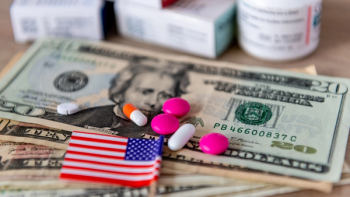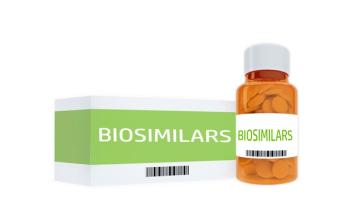Welcome to the silver anniversary of Pharmaceutical Executive’s Pharm Exec 50. For the last 25 years, we have ranked and documented the risers and fallers, Big Pharma’s old guard vs. biotech’s fast emergers, and everyone in between, of the top 50 global biopharma manufacturers based on prescription drug sales. Chronicling the various twists and turns and broader strategic industry influences along the way, each new year of data and trend analysis has told its own unique story. The latest “Pharma 50,” this year an expanded installment (see our accompanying data slideshow), is no different.
While many support the notion that the life sciences and healthcare enterprises are perhaps entering a golden age of innovation, our silver-milestone report characterizes an industry now clearly in the throes of massive operational transition. A quick flip of the calendar, marked by the January return of the Trump administration in the US, has provided ample evidence.
For starters, there’s the specter of US tariffs on pharmaceutical imports; sweeping US health agency downsizing and funding cuts; proposed budget reductions to Medicare and Medicaid; and executive order-fueled pricing directives. These, too, it’s worth reminding, are but a sampling of headwinds swirling outside of the normal, fundamental business impacts and challenges. Those include various patent cliffs; still-shaky M&A and biotech investment footing; shifting competitive landscapes in chronic disease (i.e., weight loss, immunology); and more segmented therapeutic targeting in settings such as oncology and CNS as advances in science, technology, and artificial intelligence hold promise to accelerate novel and specialized treatments to the market.
Meanwhile, the complexion of our Pharma 50 leaderboard, particularly those lofty and entrenched—but also quite fluid—spots from 1 through 10, has experienced considerable change as well. The newest full ledger of rankings (see tables at left and below), once again captures most recent full-year drug revenue performance (in this case, 2024). The data, provided in collaboration with longtime partner Evaluate Ltd, also includes each organization’s top-selling products and R&D investment totals.
Time will dictate, of course, how much today’s dialed-up policy and regulatory climates, and their clinical and commercial reverberations—good or bad—will ultimately rearrange the Rx fortunes of those on our list in the coming years. One apparent likelihood, however, and echoed by industry experts, will be a greater proliferation of the so-called unintended consequences resulting from the volatility—byproducts that drugmakers will have to deftly navigate in conjunction with their annual growth pursuits.
“The reality is there’s so much patient need, even in the areas where there is competition,” Kevin Dondarski, a partner at Deloitte Consulting, helping spearhead the group’s annual pharma innovation ROI report since its inception in 2010, tells Pharm Exec. “Companies, over time, have established pretty nuanced understanding of certain disease areas and patient populations. There is a need to be bold and not just chase what everyone else is doing, but continue to focus in the areas that have made you different in the past.”
NUMBERS AND NARRATIVE
Dug in firmly from our previous scorecard, Johnson & Johnson and AbbVie again secured the No. 1 and 2 positions in the Pharma 50. Interestingly, however, the duo posted the smallest relative growth year-on-year of most of those in the top 10 (J&J prescription drug sales rose 4.3% to $55.75 billion in 2024, while AbbVie’s increased 3.3% to $54.48 billion). That said, J&J’s star monoclonal antibody, Darzalex, for multiple myeloma, did eclipse the double-digit billion-dollar plateau in 2024, with sales rising 19.8% to $11.67 billion. However, of note, revenue from J&J’s longtime mainstay in inflammation, Stelara, fell slightly, by 0.5%, reflecting the drug’s increased tussling with new biosimilar entrants. For its part, in efforts to fill revenue gaps, J&J trailed only Merck in total R&D spend in 2024, investing $17.03 billion.
Though maintaining stable overall footing, AbbVie, too, was impacted by biosimilar penetration. Humira, the several-year stalwart, alas, reached its inevitable downward slope, plummeting 37.6% in sales to $8.99 billion. That dropped the drug from the world’s No. 2 seller in 2023 to out of the top 10. Quickly building up headway in its place, however, is psoriasis power Skyrizi, which rocketed 51% in sales last year, totaling $11.72 billion (1Q 2025 figures reportedly jumped 71%). In tandem, AbbVie’s Rinvoq continues to ascend as well, growing 50% in 2024, to $5.97 billion. The JAK inhibitor is approved in nine indications, most recently cleared by the FDA in April as the first oral drug of its class to treat giant cell arteritis. AbbVie’s R&D pivot in recent years to oncology, including a focus on targeting solid tumors with antibody-drug conjugates (ADCs), is starting to bear fruit (the company’s ADC Emrelis was granted accelerated approval by the FDA in May for adults with pretreated advanced non-small cell lung cancer).
Merck, boasting the world’s top-selling drug, Keytruda, for a second straight year, inched up from fourth to third in the latest rankings. The company boosted Rx sales by 6.8%, anchored by the steady growth of Keytruda (currently has 40 FDA approvals in cancer). The PD-1 immunotherapy will likely keep a stranglehold on top-product status for at least a few more years. Evaluate projects peak sales for Keytruda of $33 billion before the intravenous version starts to lose patent protection in 2028; the company is progressing clinical trials of a subcutaneous formulation, which it plans to launch as early as this fall. Perhaps in other offsetting efforts, it was reported this month that Merck apparently offered $3 billion earlier this year to acquire MoonLake Immunotherapeutics to bolster its late-phase pipeline.
Several companies are developing potential future biosimilars to Keytruda, including Amgen, which has a version in Phase III trials.
“It’s not just pure biosimilar players [anymore]. Big companies are into biosimilars as well,” notes Paul Verdin, VP, head of consulting and analytics, Evaluate Ltd, when asked about the prospects of these products, one day, entering the blockbuster discussion. “The challenge is the market ends up fairly segmented. Even though a biosimilar is not the same as a generic, you’re still chopping up a market. ... [But] for some of these big products, and peak sales to come, even if you chopped that up, say 10 times, you’ve still got a large chunk [annually].”
Rounding out the top five entrants in the Pharma 50 are Roche and Pfizer, both of which climbed one spot from the previous year. Interestingly, for Roche, long recognized in oncology, its top three-selling products are all non-cancer therapies, led by multiple sclerosis drug Ocrevus. The strategy of portfolio diversification over the last several years has begun to pay off for the Swiss drugmaker, which eclipsed the $50 billion Rx sales mark in 2024, growing 6.8% to $52.46 billion.
China Out-Licensing Heats Up
The recent $6.05 billion licensing agreement between Pfizer and Chinese biotech 3SBio marks a significant milestone, demonstrating that China is shifting its role from a pure market follower to a competitive global participant in the worldwide biopharma innovation process. This transaction not only sets a new record for upfront payments in a China out-licensing deal, but also reinforces the country’s growing recognition as a rising leader in pharma R&D.
The exclusive arrangement involves the development, manufacturing, and commercialization of SSGJ-707, a bispecific antibody targeting PD-1 and VEGF, currently undergoing several clinical trials in China for non-small cell lung cancer, metastatic colorectal cancer, and gynecological tumors. In clinical testing, the drug’s tetravalent symmetric structure has significantly enhanced treatment efficacy for solid tumors, boosting objective response rates to 52.4%—a 27% improvement over traditional monoclonal therapies.
Under the structure of the deal, 3SBio retains rights in Greater China, while Pfizer secures rights across North America, Europe, and emerging markets. 3SBio is set to receive an initial payment of $1.25 billion and could make an additional $4.8 billion through milestone-based payments.
The partnership has already triggered industry ripple effects, with a 42% biotech sector surge on Hong Kong Exchanges and Clearing Limited, the launch of eight new bispecific antibody research projects by multinational pharma companies in China, and a 65% quarterly increase in Chinese contract research organization contract volumes.
— Adam Zhang Yu, founder and CEO of investment banking firm Collabrium Partners
Pfizer continued its stretch of stabilization following the 2023 sales dives of its COVID-19 business (though Paxlovid is still delivering solid returns, notching $5.7 billion a year ago). Braftovi, the company’s combination with Eli Lilly’s Erbitux, was given accelerated approval by the FDA last December as the first biomarker-driven therapy specifically cleared for first-line treatment of mutated cancer. Pfizer is eyeing full approval after the release this month of new survival data, and also potentially strengthened its oncology stable after striking a lucrative licensing deal with China’s 3SBio in May (see sidebar), part of a wider industry trend of increasing global demand for Chinese innovation assets. But, for now, Pfizer lacks that sure-bet ultra driver or two of the past.
“They don’t have a big cash-cow product or portfolio of big cash cows like some of these other companies have,” Verdin tells Pharm Exec.
The analyst was referring to the likes of Lilly (rising 27.8% in Rx sales to 11th in this year’s Pharma 50) with GLP-1 agonists Mounjaro/Zepbound; Novo Nordisk (cracking the top 10 as many predicted, at 10th, up 24.9%) with GLP-1s Ozempic/Wegovy; and Sanofi (holding tight to ninth, behind a 8.42% jump) with Dupixent, its inflammation giant. The latter, developed and marketed with Regeneron, posted the third-highest product sales in 2024 (up 22% to $14.1 billion), trailing only Keytruda and Ozempic.
Perhaps in an equally enviable position is AstraZeneca. Flying “a little bit under the radar,” according to Verdin, the British drugmaker leapt from 8th to 6th and recorded the strongest growth of all returning top 10 entrants on our list. It added more than $7 billion in Rx revenue in 2024, totaling $50.95 billion, an increase of 16.3%. AZ’s top two producers, Farxiga, which treats type 2 diabetes, heart failure, and chronic kidney disease, and Tagrisso, a targeted therapy for non-small cell lung cancer, experienced sales spikes of 28.4% and 13.5%, respectively. Its immunotherapy blockbuster, Imfinzi, grew 11.6% in the first quarter of 2025 amid accelerated demand and new indications. Notably focused in recent years on internally-driven pipeline pursuits, AZ, in April, inked a $200 million pact with Tempus and Pathos AI on designing a large-scale multimodal deep learning model to advance cancer drug discovery.
The two other pharma giants ranked in the top 10 are Novartis and Bristol Myers Squibb at 7th and 8th, respectively. The former dropped from the third spot, with prescription drug revenue down 4.3% as the company continues to diversify its portfolio (it did boost net sales 15% in the first quarter and raised its full-year 2025 guidance). For BMS, Rx sales spiked 7.7% to $47.82 billion. On the R&D front, earlier this month, it signed a licensing deal for BNT327, a PD-L1xVEGF bispecific antibody developed by BioNTech, for $1.5 billion in upfront money.
In preparation for 25% tariffs on US pharmaceutical imports, recent announcements on US manufacturing investment by a slew of companies on our list have been well-documented.
But as Michael Grosberg, vice president of product management, Model N, points out, pharma manufacturers—as well as med device and tech companies—were already unveiling such initiatives before the threat of tariffs became a real possibility.
“Of course, there will be an impact, but, for the most part, most manufacturers report publicly that they were going to be able to mitigate those impacts through internal cost savings, some shedding manufacturing capacity, and so forth,” Grosberg tells Pharm Exec. “Some transferred a lot of material in advance of tariffs and anticipation of tariffs.”
R&D REBOUND
Also likely to influence future Pharma 50 maneuvering will be favorable developments of late across the clinical development landscape, particularly in oncology. Dondarski, citing Deloitte’s findings in its new report, notes that the return on R&D investment for the “broader cohort” of companies (biopharma’s top 20 organizations) experienced an increase for the second consecutive year. He attributes the growth to two major drivers: the outsized value associated with the GLP-1 obesity category and the strong gains from novel and so-called “fast-follower” mechanisms of action.
“Even in our circles, the term ‘innovation’ can be defined in a lot of different ways,” says Dondarski. “Any new medicine that’s approved can be considered innovation. Equally as important are established medications that are approved for either new follow-on indications or new patient populations. ... Typically, for at least the larger organizations, it’s less a question of do we spend a lot more on R&D or do we spend a lot less, but rather, how do we optimize that spending in terms of exploratory early innovation versus big pivotal registrational studies?”
In oncology, though there is concern swirling around FDA, NIH, and other research-oriented entities amid federal overhauls, experts observed a recovery of sorts last year, reflected in the return to pre-pandemic levels in the number of cancer drugs approved by the FDA. Eric Blouin, senior vice president, oncology, at IPSOS, notes that the total accounted for 40% of all new molecular entity approvals in 2024.
“Everyone is super excited about bispecifics and ADCs. You’ve got protein degraders that are becoming a big topic of discussion. But the small molecule is still the workhorse of drug development,” Blouin tells Pharm Exec.
See our compendium slideshow for more on the oncology landscape, including a selection of biopharma companies driving advancement.
Michael Christel is the Group Managing Editor of Pharmaceutical Executive, Pharmaceutical Commerce, and Applied Clinical Trials. He can be reached at mchristel@mjhlifesciences.com.





